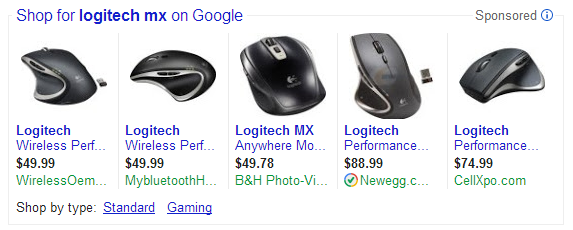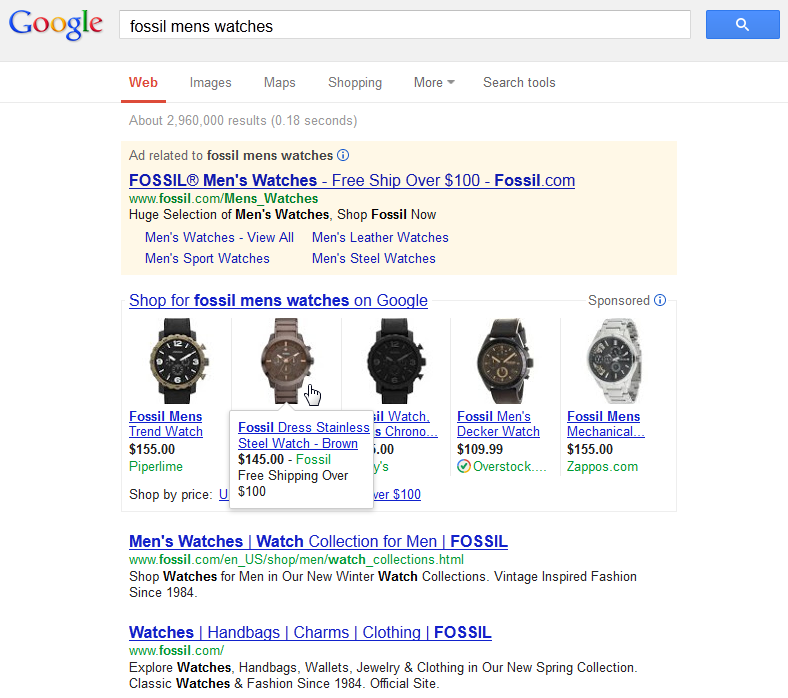6 Advanced Strategies For Optimizing PLA Campaigns
In January, Marin Software released a study on Google’s 2012 transition from Google Product Search to the commercial, “pay-to-play” model built on Product Listing Ads. When this enhanced shopping experience was first announced in May of 2012, online retailers reacted with both praise and criticism. However, since the transition, PLA campaigns have performed with a […]
In January, Marin Software released a study on Google’s 2012 transition from Google Product Search to the commercial, “pay-to-play” model built on Product Listing Ads. When this enhanced shopping experience was first announced in May of 2012, online retailers reacted with both praise and criticism.
However, since the transition, PLA campaigns have performed with a great deal of success. In fact, by the end of December 2012, the share of spend on PLA campaigns had increased 600% compared to January. More importantly, during the fourth quarter of 2012, as holiday shoppers searched and purchased products and gifts, some online retailers allocated as much as 30% of their search spend toward PLAs.
The richer and more engaging search experience that PLAs provide for users has produced a seemingly exponential surge in PLA adoption and spend.
However, compared to traditional paid search campaigns, PLAs are still in their infancy. Managing and optimizing the Merchant Center product feed, ad group promotions, and product targets remain relatively foreign concepts for search marketers.
In simplifying their approach to optimizing PLA campaigns, many retailers fail to deliver a relevant and rich ad experience that maximizes available revenue opportunities. By implementing the following six strategies, search marketers can refine their approach to managing and optimizing PLA campaigns and improve their revenue outcomes in 2013.
1. Fresh, Accurate & Comprehensive
PLAs aren’t “set it and forget it” campaigns. The effectiveness of any PLA campaign starts with the quality of the product data that’s fed into Google Merchant Center. This quality is based on three factors: freshness, accuracy and comprehensiveness.
The freshness of data is based on how well the attributes defined in your product feed align with the information provided on your website. For instance, if a user lands your website via a PLA, the price shown within the ad should match the price on your website. If product details don’t match, items within Google Shopping results may be suspended. To address this issue, submit an updated product feed to Google at the same time your website is updated with new product information.
Data accuracy, like freshness, affects the shopping experience and is enforced with a high standard. To prevent products from being suspended from Google Shopping, in some cases up to one week, search marketers need to ensure that product attributes are accurate in that images match the product title and description, tax and shipping costs are correct, and other product attributes are defined to meet the Google Shopping policies.
In order to present users with highly relevant PLAs for their specific product searches, search marketers need to provide comprehensive product information within their product feed. The more information, or defined attributes, Google has about your products, the better they can serve users with relevant PLAs and send them to your website. For more information on basic and advanced product feed attributes, click here.
2. A Picture Is Worth A Thousand Clicks
For the most part, PLAs are image-based ads. A relevant image is critical for engaging shoppers, and utilizing a stock photo fails to differentiate your products from your competitors.
If a user searches for a particular product brand and model, you’ll want to deliver an ad that shows that exact brand and model; but, to engage the shopper and promote a higher click-through rate for your products, use unique images that are not only high in quality and detail, but also represent the products accurately.
In the example below, only two of the five PLAs use an image that differentiates the ad from the competitors.
3. Be Competitively Priced
Listing price becomes much more of a factor with PLAs than standard text ads — shoppers are able to compare prices directly within the search results page, making PLA clicks much more qualified than a standard text ad. Retailers need to ensure that the price listed for their products remain competitive, as well as accurate, compared to the PLAs from other retailers.
In the shopping results below, the wide range of prices will undoubtedly influence which PLAs will be clicked.
4. You’ve Got A Friend In Paid Search
With increasing competition among retailers to maximize product visibility, search marketers that deliver standard text ads in addition to PLAs are positioned to claim more real estate across the search engine results page (SERP).
In fact, with a sound search engine optimization (SEO) strategy, retailers can show up to four times above the fold on product-related searches: standard text ad, PLA, natural search result and image search. This level of visibility is difficult to achieve, but like the example below, most brands are able to show for three of the four.
Retailers that align their promotions and product messaging across text ads and PLAs (“Free Shipping Over $100” in the example below) will succeed in creating a consistent shopping experience and maximize product visibility for their customers.
5. Make Like A Keyword & Get Granular
PLAs leverage product targets, rather than keywords, to determine which items appear for product related search queries.
Since each product target is defined using the product attributes set within AdWords and Merchant Center, bids can be assigned to represent individual products or groups of products. As a result, search marketers can leverage the “id” attribute to create granular product targets that target individual products or more general product targets that target items from specific “brands.”
These levels of granularity allow retailers to align product targets with business goals, enabling them to calculate bids that maximize revenue across products as well as product categories. Keep in mind that search marketers that leverage automated bidding solutions will have more freedom in their product target granularity.
To further improve relevance and PLA performance, implement negative keywords to limit the searches for which your ads will show and set product filters to define which products can appear for your PLAs.
6. Test Into The Great Unknown
As with all new ad formats, testing is the key to long-term success. For PLAs, be sure to test promotional text, images, and product target granularity.
With the success online retailers experienced with PLA campaigns during Q4 of last year, there is only room for improvement. Search marketers that begin testing early in 2013 will not only be able to optimize their PLA campaigns, but be in a position to acquire more revenue during the busy holiday season.
Contributing authors are invited to create content for Search Engine Land and are chosen for their expertise and contribution to the search community. Our contributors work under the oversight of the editorial staff and contributions are checked for quality and relevance to our readers. The opinions they express are their own.
Related stories


